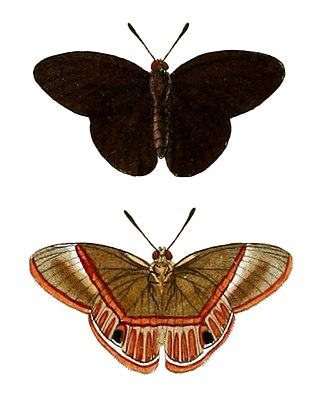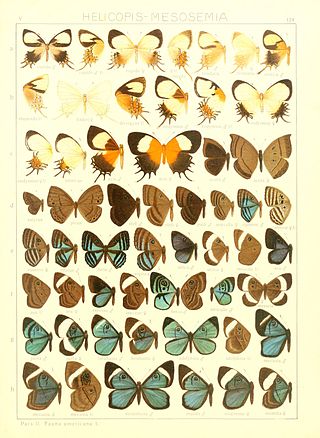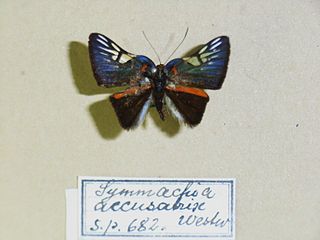
Pouteria is a genus of flowering trees in the gutta-percha family, Sapotaceae. The genus is widespread throughout the tropical Americas, with outlier species in Cameroon and Malesia. It includes the canistel, the mamey sapote, and the lucuma. Commonly, this genus is known as pouteria trees, or in some cases, eggfruits.

Lyssomanes is a spider genus of the family Salticidae, ranging from South and Central America, up to the southern United States.

Micrathena, known as spiny orbweavers, is a genus of orb-weaver spiders first described by Carl Jakob Sundevall in 1833. Micrathena contains more than a hundred species, most of them Neotropical woodland-dwelling species. The name is derived from the Greek "micro", meaning "small", and the goddess Athena.

Eschweilera is a genus of woody plants in the family Lecythidaceae first described as a genus in 1828. It is native to southern Mexico, Central America, South America, and Trinidad.

The following outline is provided as an overview of and topical guide to South America.

Myscelus is a Neotropical genus of skippers in the family Hesperiidae.

Telchin licus, the banana stem borer, is a moth of the Castniidae family. It is native to South America, where it is found from Colombia, Venezuela and the Guianas, throughout the Amazon basin in Brazil and Peru. It has also been recorded as an introduced species in Hawaii.

Castniomera is a monotypic moth genus in the family Castniidae described by Constant Vincent Houlbert in 1918. Its single species, Castniomera atymnius, commonly known as the giant butterfly-moth, was first described by Johan Wilhelm Dalman in 1824. It is known from Mexico through Central America to Venezuela.

Xanthocastnia is a genus of moths within the family Castniidae containing only one species, Xanthocastnia evalthe, which is widespread in the Neotropical realm, ranging from southern Mexico to southern Brazil.
Castnia invaria is a moth in the family Castniidae. It is found in South America.
Athis palatinus is a moth in the Castniidae family. It is found from Mexico south to Peru and Brazil.
Corybantes pylades is a moth in the Castniidae family. It is found in Suriname, Brazil (Amazonas) and French Guiana.
Eupalamides cyparissias is a moth in the Castniidae family. It is widespread in the Amazon basin including Peru, Colombia, Ecuador, Venezuela, Brazil, the Guianas, Suriname and north to Panama.

Euselasia is a genus of butterflies in the family Riodinidae. They are present only in the Neotropical realm. The genus was erected by Jacob Hübner in 1819.

Mesosemia is a genus in the butterfly family Riodinidae present only in the Neotropical realm.

Symmachia is a genus in the butterfly family Riodinidae present only in the Neotropical realm.

Nymphidium is a genus in the butterfly family Riodinidae present only in the Neotropical realm.
Dicepolia roseobrunnea is a moth in the family Crambidae. It was described by Warren in 1889. It is found from central and northern Bolivia and south-eastern Peru to north-eastern Brazil, from the Pantanal to the coastal range of the northern Andes, Trinidad, Guyana, Suriname and French Guiana. It has also been recorded from Honduras.

Calydna is a genus of butterflies in the family Riodinidae. They are resident in the Neotropics.

Calospila is a butterfly genus in the family Riodinidae. They are resident in the Americas.














